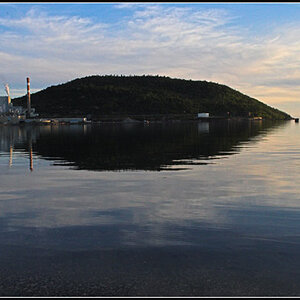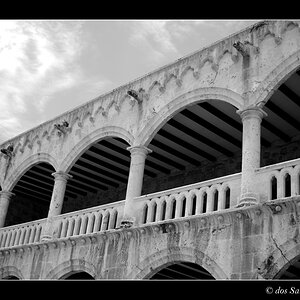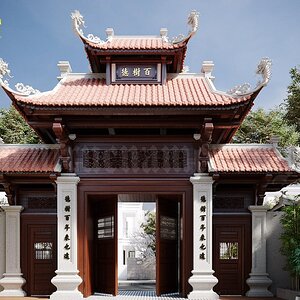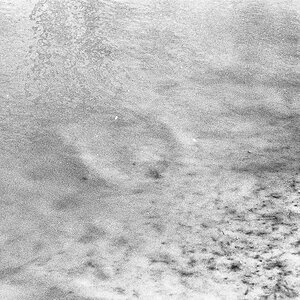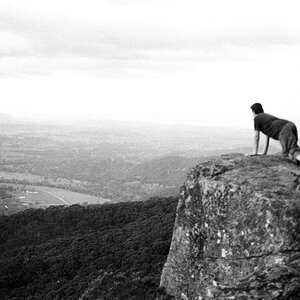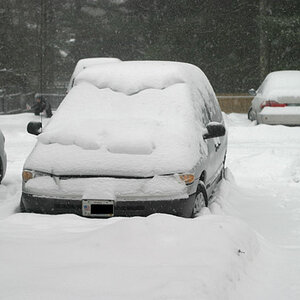- Joined
- Apr 9, 2009
- Messages
- 41,401
- Reaction score
- 5,706
- Location
- Iowa
- Website
- kharrodphotography.blogspot.com
- Can others edit my Photos
- Photos OK to edit
I have mentioned before I had new lenses put in my eyes and can see very well at a distance again.
That re-sparked my interest in astronomy, so UPS delivered 3 big boxes Monday afternoon that contained my new, fast, 12", f/4.9, 1500 mm Newtonian telescope and Dobson type altitude-azimuth mount.
The 2 biggest boxes weighed 90 lbs together so the UPS guy had to use a hand cart to get the boxes to the back door.

Tres cajas (3 boxes)
The 12" mirror in it's mirror cell was very well packaged by itself in a double box (22 lbs). It's the box on top of the biggest box. The flat box (42 lbs) has the base/mount parts in it. The biggest box (48 lbs) holds the 14" optical tube sections and sundry other parts.
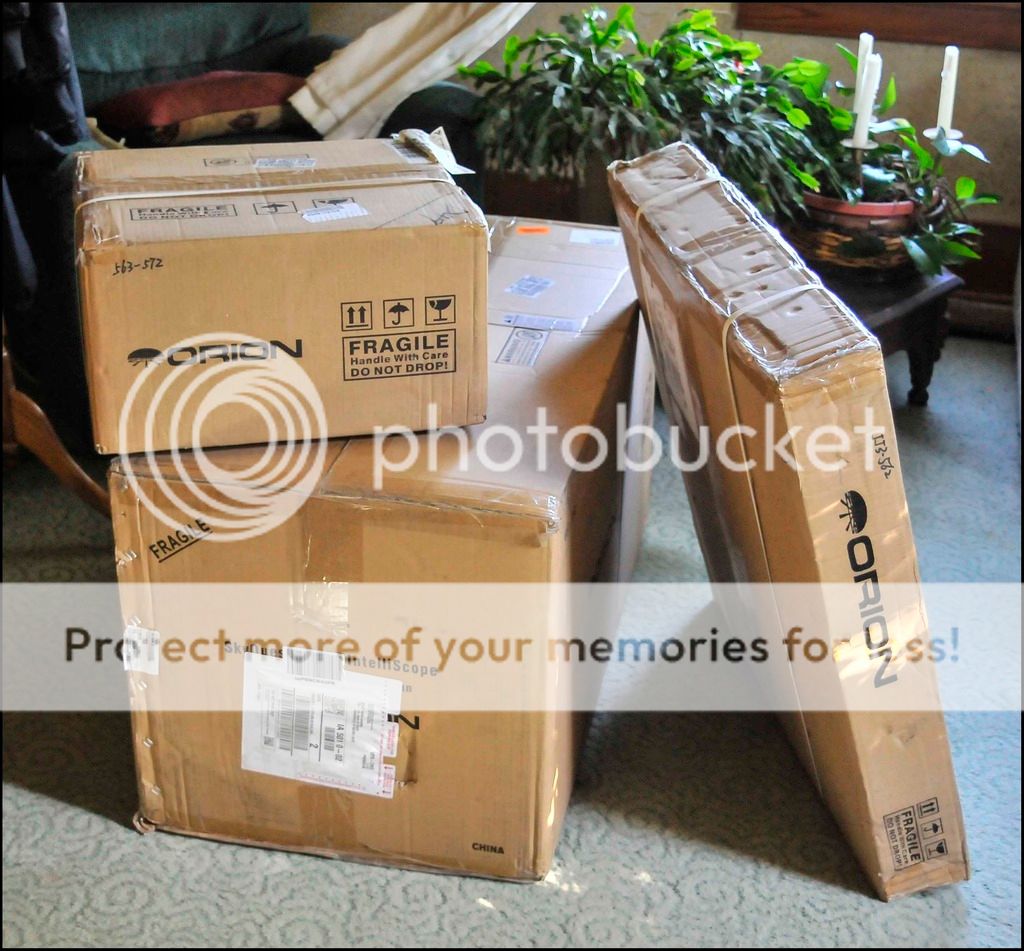
The main telescope mirror all snug, cozy, and safe in it's shipping box.
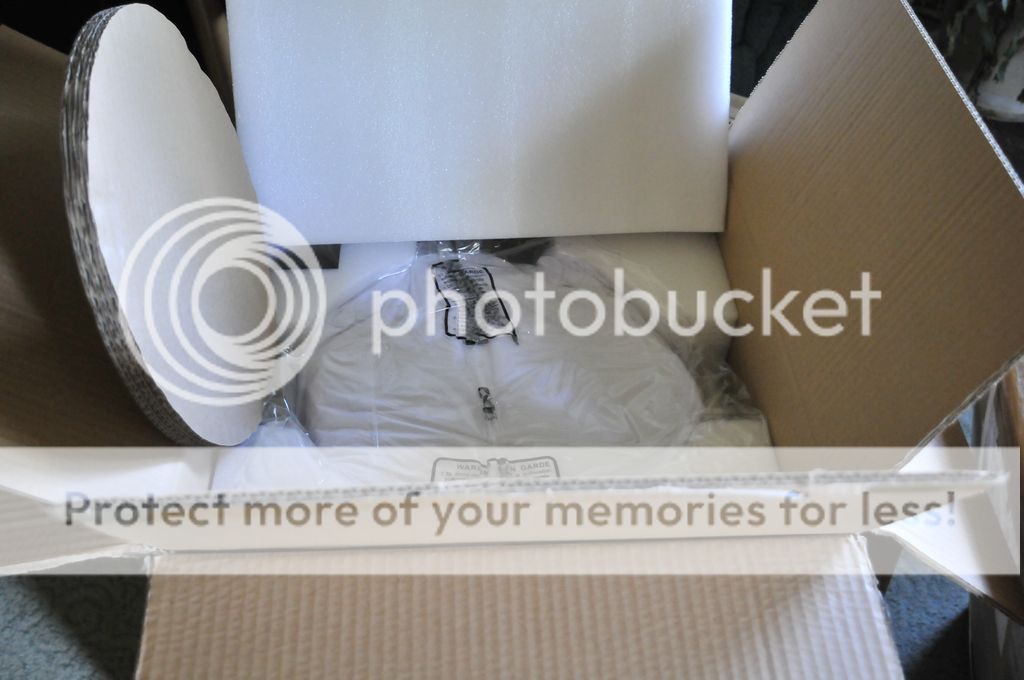
Here is the base all assembled. The Altitude and Azimuth bearings have electronic magnetic position encoders on them that report to a 9v battery powered, hand-held object locator computer that plugs into the center of that white circle on the near side panel. The silver disc on the far side panel is the altitude position encoder. Because of the grass you can't see the lower part of the base that has 3 feet on the ground. The part of the base you can see is the azimuth bearing and it rotates on that lower base.
Once an telescope alignment sequence has been completed, the object locator computer gives directions for moving the telescope in altitude and azimuth
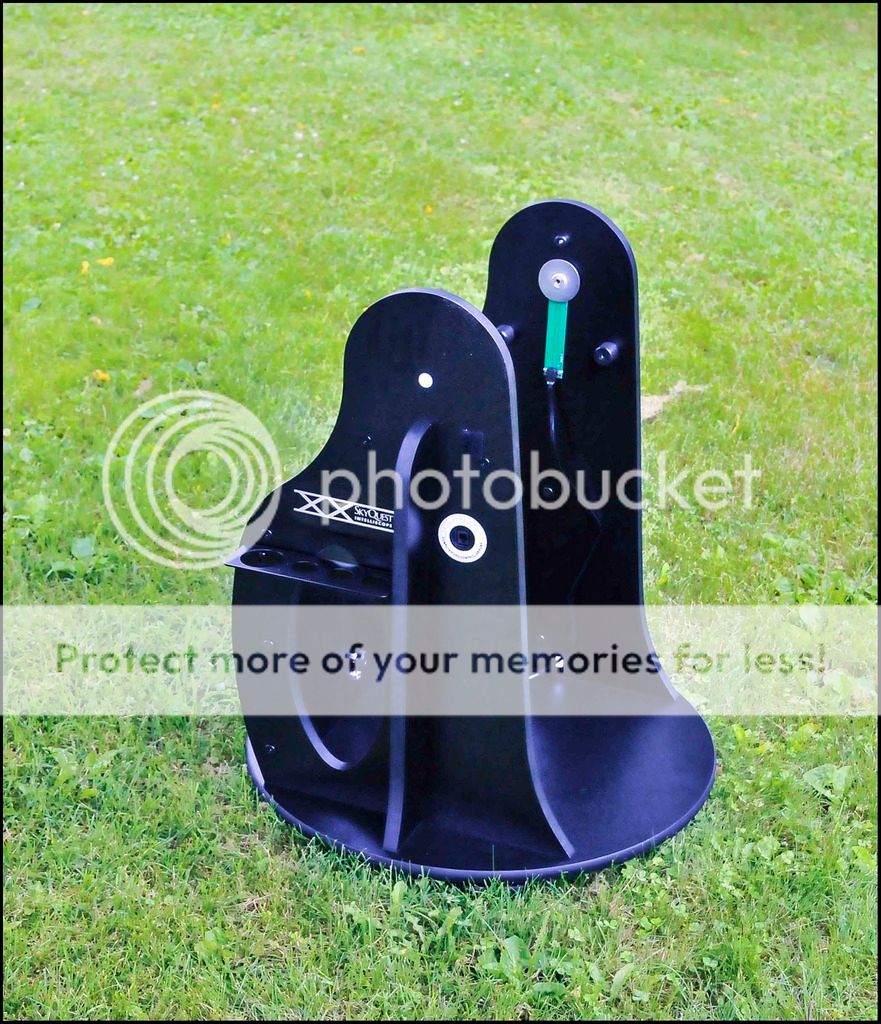
To aid portability the optical tube assembly (OTA) has 3 sections.
The lowest section has the main mirror in the bottom of it. Here I have the tube section cover on so nothing can fall onto the 12" wide main mirror. This section of the OTA has 2, 8" altitude bearings on the sides and 4 truss rod brackets around the top of it.
We cannot see here is a fan on the bottom of the mirror cell to help get the thick Pyrex mirror to the same temperature as the ambient air temperature. The mirror cell fan is powered by 8, D-cell batteries.
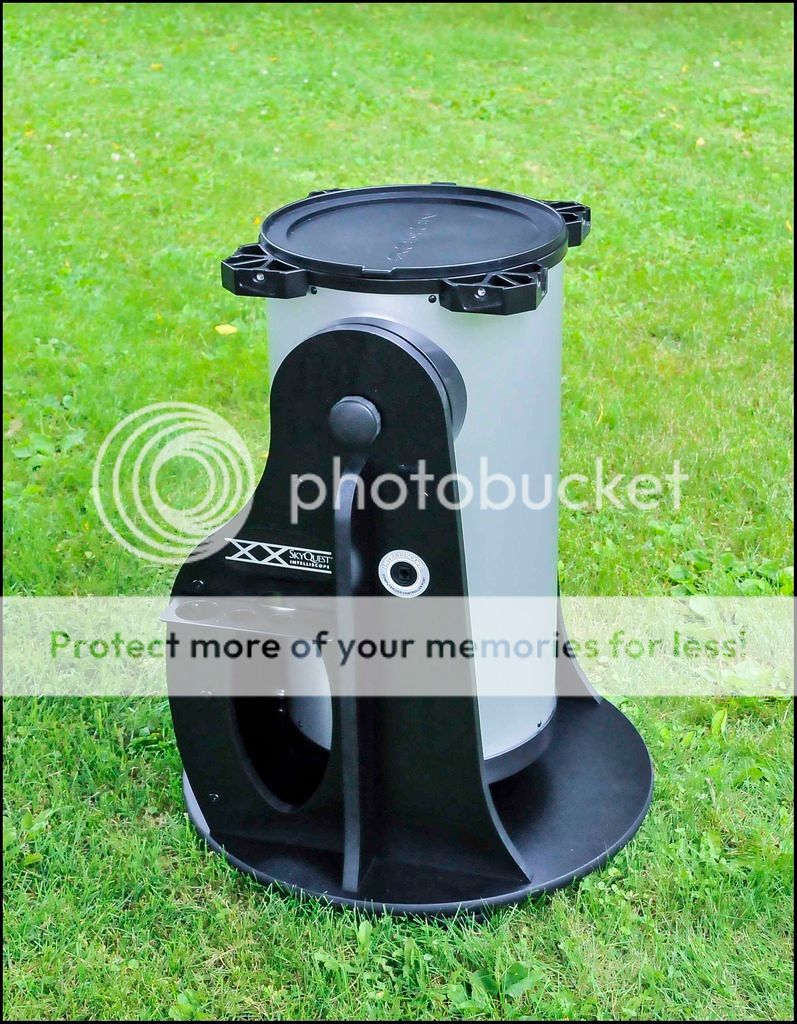
Here I took the tube cap off for an oblique look down at the mirror. The surface of the mirror is not flat. It has been ground to the shape of a parabola that causes light to focus 1500 mm from the mirror. You can see 2 of the 3 edge clips that hold the mirror in it's 9-point flotation cell. The shot also shows the top of the altitude bearing on the side of the tube and the bolts and nuts inside the tube that mount the 2 bearings to the tube.
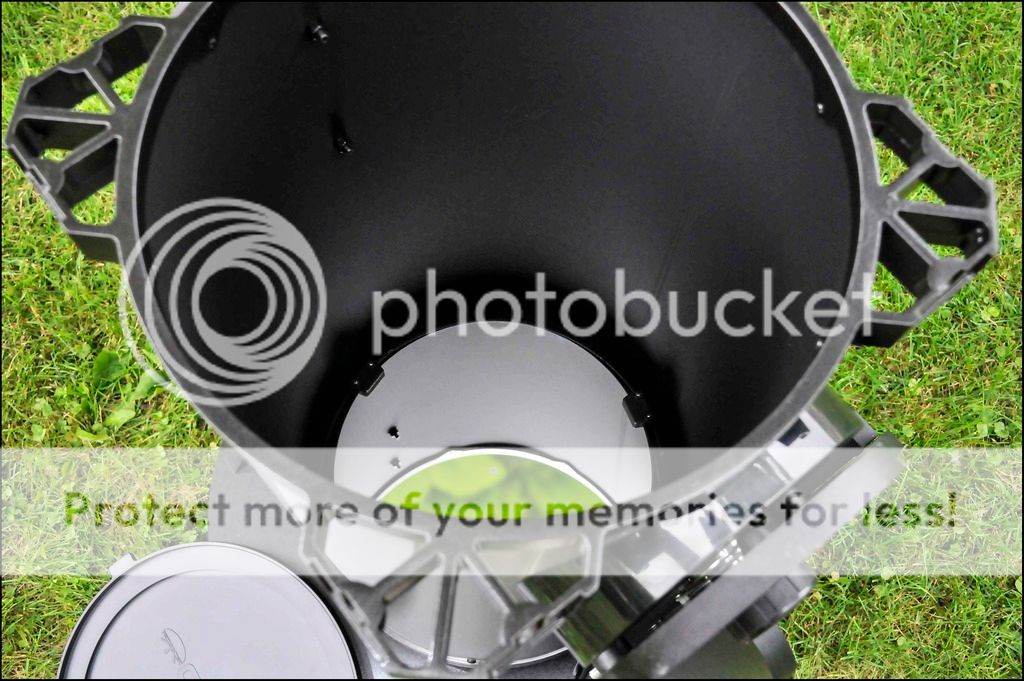
Down the tube.
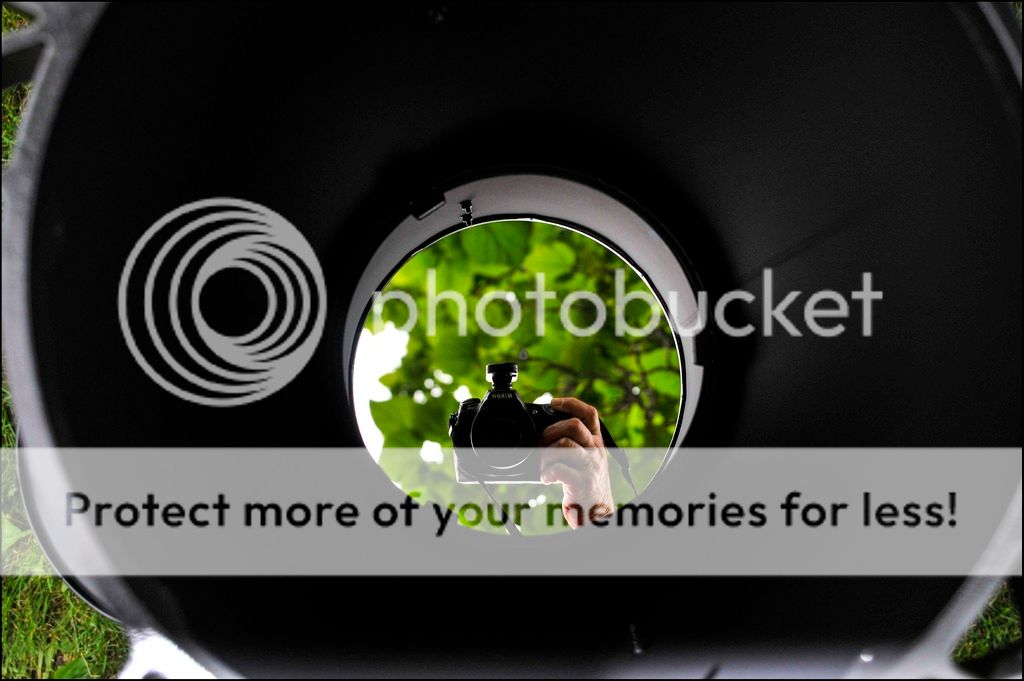
Here the 8 truss rods have been attached to the 4 truss rod mounting brackets on the lower tube section.
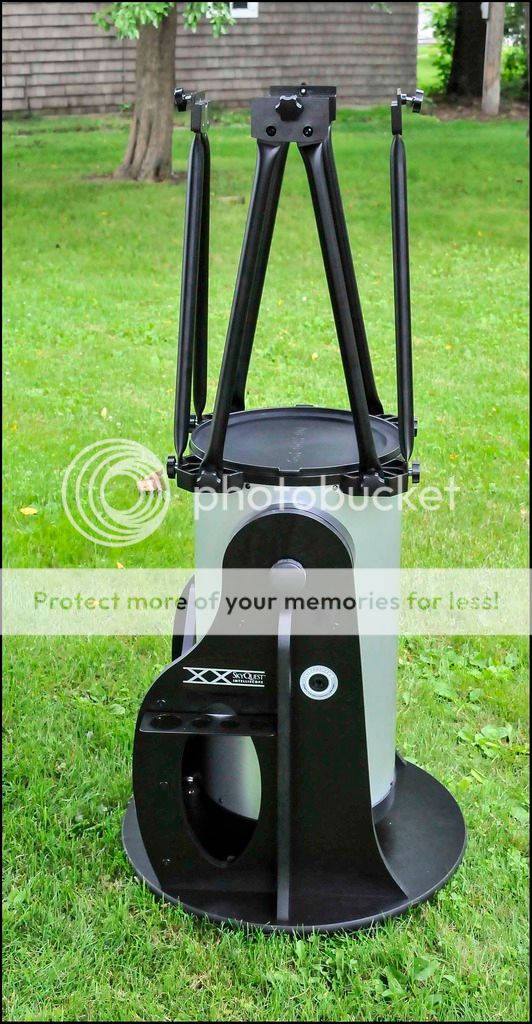
The top tube section with it's 2"/1.25", 2-speed (11:1), Crayford style eyepiece focuser and 9x50 finder scope now secured to the top of truss rods. I have moved the telescope in altitude
Also the object locator computer is plugged in and stuck to the side panel w/Velcro.
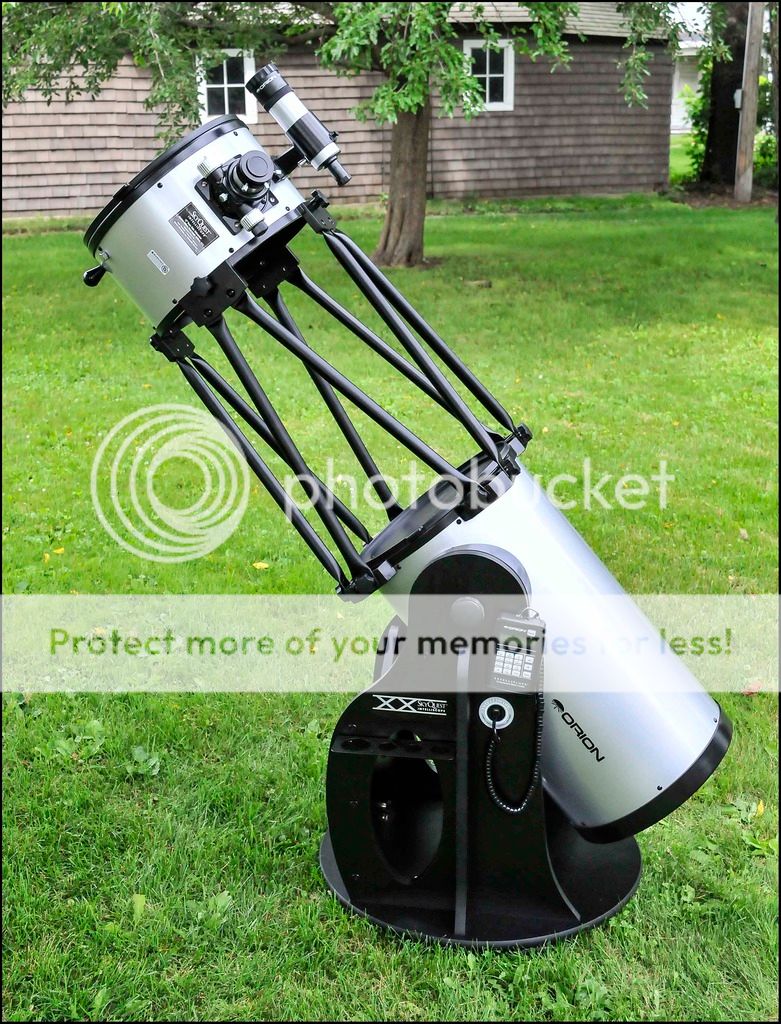
Here is a shot that shows the flat, oval, tilted at 45° secondary mirror that deflects the light from the main mirror 90° and out the side of the tube to the focuser. If you look in the focuser without an eyepiece in it, the tilted, flat secondary mirror looks round. To the right of the focuser you can see the mount for the finder scope - without the finder scope in the mount.
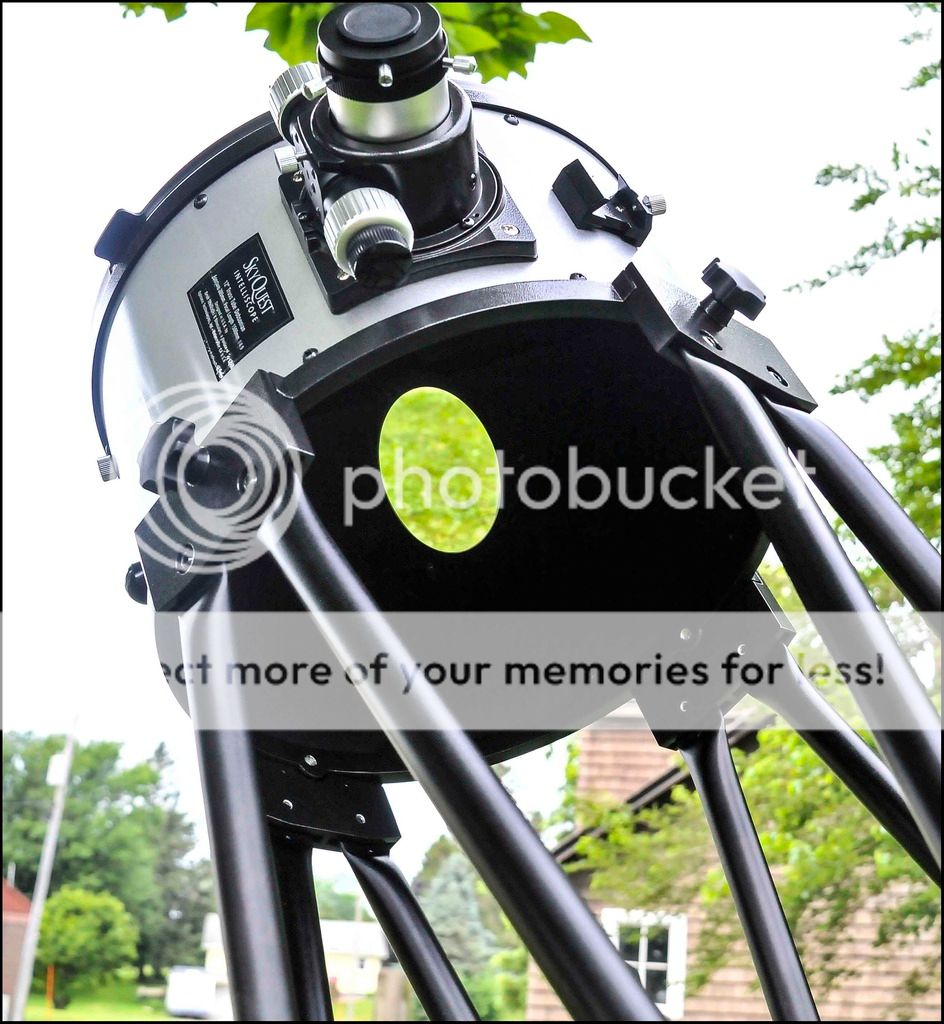
To give a sense of scale, I got some overweight, 5' 10" tall old guy to stand next to the telescope.
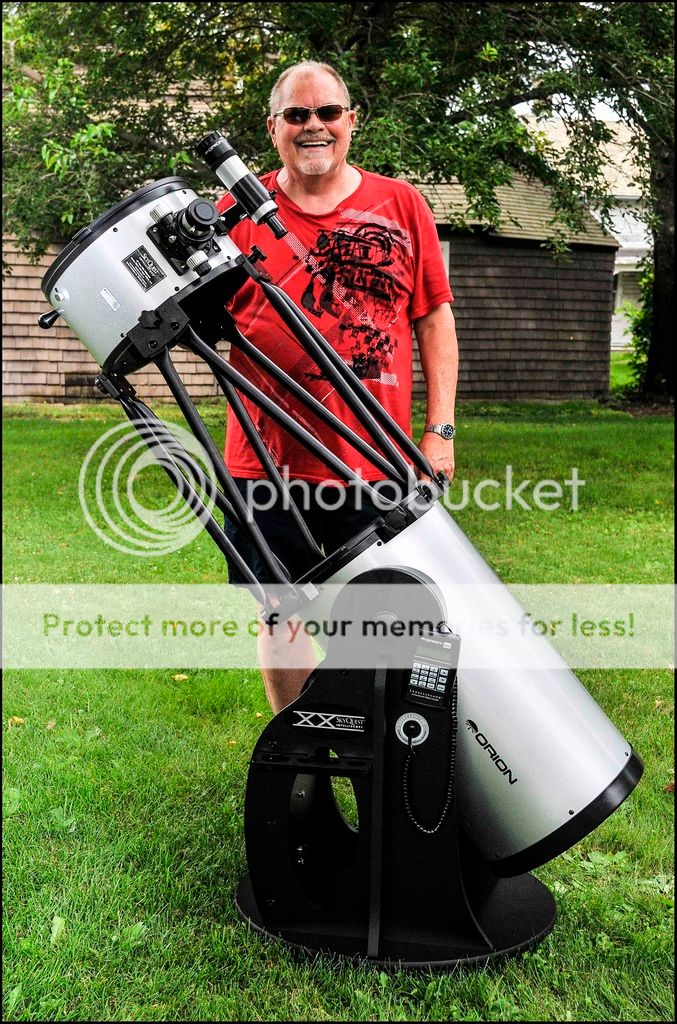
That re-sparked my interest in astronomy, so UPS delivered 3 big boxes Monday afternoon that contained my new, fast, 12", f/4.9, 1500 mm Newtonian telescope and Dobson type altitude-azimuth mount.
The 2 biggest boxes weighed 90 lbs together so the UPS guy had to use a hand cart to get the boxes to the back door.

Tres cajas (3 boxes)
The 12" mirror in it's mirror cell was very well packaged by itself in a double box (22 lbs). It's the box on top of the biggest box. The flat box (42 lbs) has the base/mount parts in it. The biggest box (48 lbs) holds the 14" optical tube sections and sundry other parts.

The main telescope mirror all snug, cozy, and safe in it's shipping box.

Here is the base all assembled. The Altitude and Azimuth bearings have electronic magnetic position encoders on them that report to a 9v battery powered, hand-held object locator computer that plugs into the center of that white circle on the near side panel. The silver disc on the far side panel is the altitude position encoder. Because of the grass you can't see the lower part of the base that has 3 feet on the ground. The part of the base you can see is the azimuth bearing and it rotates on that lower base.
Once an telescope alignment sequence has been completed, the object locator computer gives directions for moving the telescope in altitude and azimuth

To aid portability the optical tube assembly (OTA) has 3 sections.
The lowest section has the main mirror in the bottom of it. Here I have the tube section cover on so nothing can fall onto the 12" wide main mirror. This section of the OTA has 2, 8" altitude bearings on the sides and 4 truss rod brackets around the top of it.
We cannot see here is a fan on the bottom of the mirror cell to help get the thick Pyrex mirror to the same temperature as the ambient air temperature. The mirror cell fan is powered by 8, D-cell batteries.

Here I took the tube cap off for an oblique look down at the mirror. The surface of the mirror is not flat. It has been ground to the shape of a parabola that causes light to focus 1500 mm from the mirror. You can see 2 of the 3 edge clips that hold the mirror in it's 9-point flotation cell. The shot also shows the top of the altitude bearing on the side of the tube and the bolts and nuts inside the tube that mount the 2 bearings to the tube.

Down the tube.

Here the 8 truss rods have been attached to the 4 truss rod mounting brackets on the lower tube section.

The top tube section with it's 2"/1.25", 2-speed (11:1), Crayford style eyepiece focuser and 9x50 finder scope now secured to the top of truss rods. I have moved the telescope in altitude
Also the object locator computer is plugged in and stuck to the side panel w/Velcro.

Here is a shot that shows the flat, oval, tilted at 45° secondary mirror that deflects the light from the main mirror 90° and out the side of the tube to the focuser. If you look in the focuser without an eyepiece in it, the tilted, flat secondary mirror looks round. To the right of the focuser you can see the mount for the finder scope - without the finder scope in the mount.

To give a sense of scale, I got some overweight, 5' 10" tall old guy to stand next to the telescope.

Last edited:


